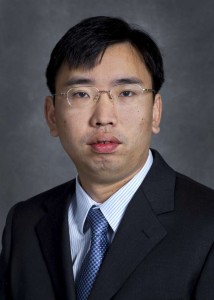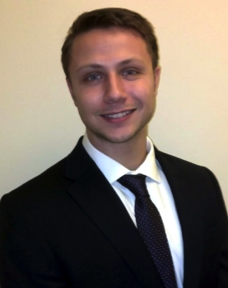 The Catalysis Club of Chicago is pleased to announce that Dr. Haiying Chen (Johnson Matthey) is the recipient of the 2014 Herman Pines Award in Catalysis. This Award is given to recognize Dr. Chen’s significant contributions to the advancement of environment catalysis and technology. Dr. Chen’s research has led to the discovery and successful development and commercialization of (1) small pore molecular sieve supported transition metal catalysts for the Selective Catalytic Reduction (SCR) of NOx with NH3; (2) NOx adsorber catalysts for heavy duty diesel emission control; and (3) sustainable technologies for the control of volatile organic compound (VOC) emissions from industrial processes. In addition, his research has led to the development of low temperature emission control technologies to meet future emission standards.
The Catalysis Club of Chicago is pleased to announce that Dr. Haiying Chen (Johnson Matthey) is the recipient of the 2014 Herman Pines Award in Catalysis. This Award is given to recognize Dr. Chen’s significant contributions to the advancement of environment catalysis and technology. Dr. Chen’s research has led to the discovery and successful development and commercialization of (1) small pore molecular sieve supported transition metal catalysts for the Selective Catalytic Reduction (SCR) of NOx with NH3; (2) NOx adsorber catalysts for heavy duty diesel emission control; and (3) sustainable technologies for the control of volatile organic compound (VOC) emissions from industrial processes. In addition, his research has led to the development of low temperature emission control technologies to meet future emission standards.
Dr. Chen has been invited to give lectures at various universities as well as on national and international scientific meetings. He has published 13 patents and over 50 publications. In addition, Dr. Chen has served the catalysis community in several leadership roles.
The award includes an honorarium ($1,000) and a plaque. Dr. Chen will receive this award and deliver the Award address at the Catalysis Club of Chicago Spring Symposium on May 13, 2014 at the BP Research Center in Naperville, IL.
List of past recipients of the Herman Pines Award
- 1999 Harold Kung (Northwestern University)
- 2000 John Monnier (Eastman Chemical)
- 2001 Lanny Schmidt (University of Minnesota)
- 2002 James Brazdil (BP)
- 2003 James Dumesic (University of Wisconsin)
- 2004 Alak Bhattacharyya (BP)
- 2005 Israel Wachs (Lehigh University)
- 2006 Jeffrey Miller (BP)
- 2007 Chunshan Song (Pennsylvania State University)
- 2008 Aleksey Yezerets (Cummins)
- 2009 Tobin Marks (Northwestern University)
- 2010 James Rekoske (UOP)
- 2011 Jingguang Chen (University Delaware)
- 2012 Stuart Soled (ExxonMobil)
- 2013 W. Nicholas Delgass (Purdue University)




